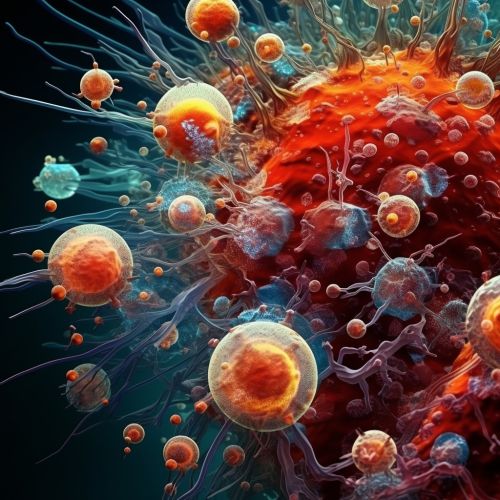Meningitis
Overview
Meningitis is an acute inflammation of the protective membranes covering the brain and spinal cord, known collectively as the meninges. This inflammation can be caused by a variety of pathogens, including bacteria, viruses, and fungi. Meningitis can be life-threatening due to the inflammation's proximity to the brain and spinal cord; therefore, the condition is classified as a medical emergency.
Causes
Meningitis is typically caused by an infection with microorganisms. Most cases are caused by either viruses or bacteria, but it can also be caused by fungal infections. The severity of illness and treatment differ depending on the cause. Thus, it is important to know the specific cause to provide the correct treatment.


Symptoms
The most common symptoms of meningitis are headache and neck stiffness associated with fever, confusion or altered consciousness, vomiting, and an inability to tolerate light (photophobia) or loud noises (phonophobia). Children often exhibit only nonspecific symptoms, such as irritability and drowsiness. If a rash is present, it may indicate a particular cause of meningitis; for example, meningitis caused by the bacterium Neisseria meningitidis (known as "meningococcal meningitis") can be differentiated by a rash.
Pathophysiology
The inflammation of the meninges may lead to the blood-brain barrier becoming more permeable, leading to edema and swelling of the brain, decreasing blood flow and causing cerebral hypoxia. This can cause seizures, brain damage, and can be fatal.
Diagnosis
Meningitis is diagnosed by collecting a sample of cerebrospinal fluid (CSF) by lumbar puncture and examining it under a microscope. The CSF is examined for signs of infection such as elevated white blood cell count, elevated protein, and decreased glucose.
Prevention
Some forms of meningitis (such as those caused by Neisseria meningitidis, Haemophilus influenzae, and Streptococcus pneumoniae) can be prevented with immunization. Prophylactic antibiotics can also be given to close contacts of those with meningococcal meningitis.
Treatment
The treatment for meningitis depends on the cause of the disease. Bacterial meningitis is usually treated with intravenous antibiotics and sometimes antiviral medications. Fungal meningitis is treated with long courses of high dose antifungals, such as amphotericin B and flucytosine. Viral meningitis, on the other hand, typically resolves on its own and treatments often only help ease symptoms.
Epidemiology
Meningitis occurs worldwide, but is most common in the "meningitis belt" of sub-Saharan Africa, spanning from Senegal in the west to Ethiopia in the east. During the dry season in this region, dust winds, cold nights, and upper respiratory tract infections combine to damage the nasopharyngeal mucosa, increasing the risk of meningococcal disease.
History
The first recorded cases of meningitis are from the 1800s. The bacterium Neisseria meningitidis was first identified by Austrian bacteriologist Anton Weichselbaum in 1887.
